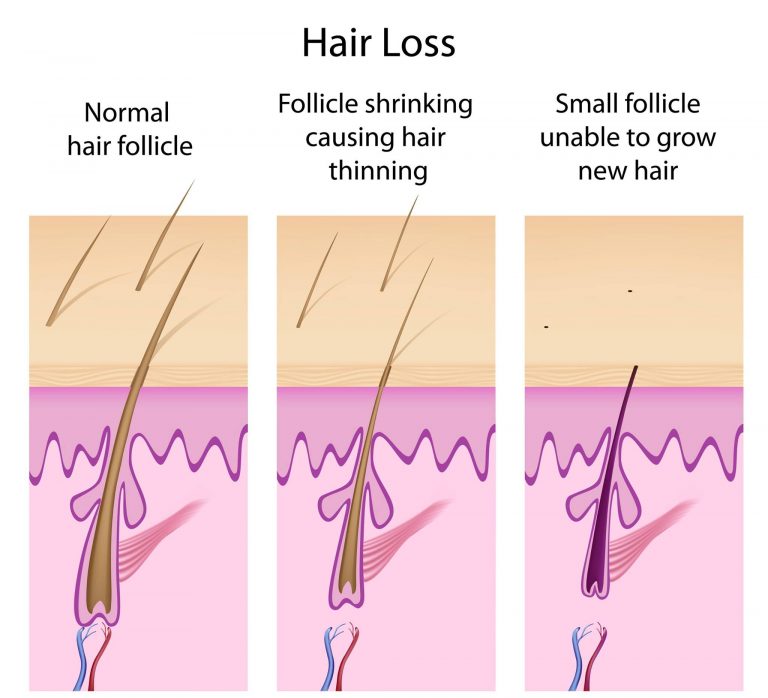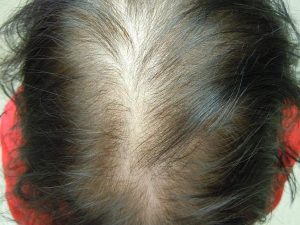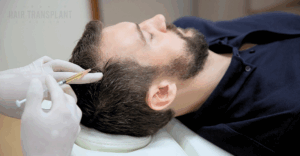The Common Cause of Hair Loss
If you’re suffering from hair loss then you’ve no doubt found yourself standing in front of the mirror, inspecting your hairline as part of your daily routine. No doubt you’ve become practiced in the art a contortion as you twist your head to try to glimpse your bald patch, trying to angle the second mirror over your head. Through it all, you’re asking yourself the Question, why me?
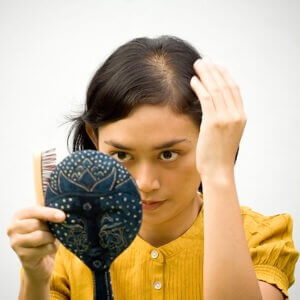
There are multiple different reasons for hair loss, the most common being androgenetic alopecia.
Androgenetic alopecia
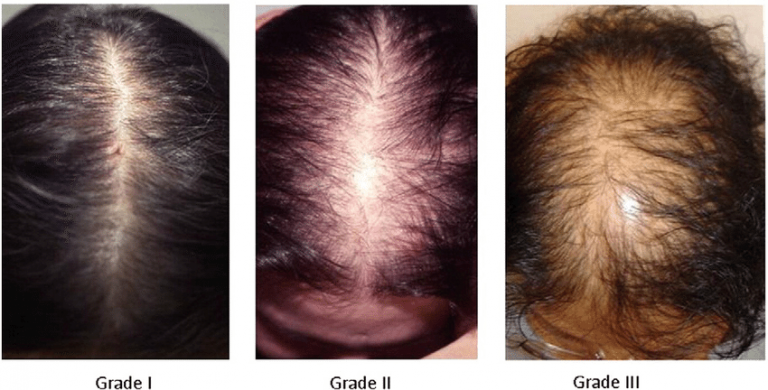
Androgenetic Alopecia – otherwise known as male-pattern baldness – is a common form of hair loss both with men and women.
Beginning above both temples, hair is lost in a well-defined pattern. Over time, the hairline recedes to form a characteristic “M” shape, whilst also thinning at the top of the head. This often progresses to complete baldness.
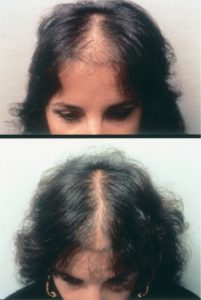 For women, the effects are slightly different from androgenetic alopecia. Rarely does it lead to total baldness? Instead of the hairline receding, the hair becomes thinner all over.
For women, the effects are slightly different from androgenetic alopecia. Rarely does it lead to total baldness? Instead of the hairline receding, the hair becomes thinner all over.
This form of hair loss affects an estimated 50 million men and 30 million women in the United States. Despite it being less common in women and it rarely leading to full baldness when it does occur, there is more of a social stigma attached to female baldness. For men, it is accepted that a certain percentage of men will suffer from baldness. Some women even find the bald look potentially rugged and attractive. With women, however, thinning hair is not accepted as a common social norm and can be far more psychologically detrimental to their self-esteem
What Causes Androgenetic Alopecia?
Male/Female Pattern Baldness involves the action of the hormones called androgens. Androgens are critical for normal male sexual development. Testosterone is one type of androgen. They also have other important functions in both sexes, including sex drive and, more pertinently, the regulation of hair growth.
Androgens induce alopecia by shortening the anagen phase – hair’s growing phase – and increasing the number of hairs that are in the telogen phase – the resting phase. This lengthening of the time between the shedding of a hair and the start of a new anagen phase means that it takes longer for hair to start growing back after it is shed in the course of the normal growth cycle. Thus, you get thinning of the hair.
That would be bad enough, but additionally, the hair follicle itself also changes. It shrinks and produces a shorter, thinner hair shaft. This process is called follicular miniaturization. It results in thicker, longer-lived hairs being replaced by shorter, thinner, hairs called vellus.
Why Me? A Common Reaction To Hair Loss
There is no doubt that genetic inheritance plays a part. The gene suspected to be responsible
Is found on the X chromosome, which is passed on by the mother, with s 50% chance existing for a person to share the same X chromosome as his maternal grandfather. So if your mother’s father is bald, then there’s a fair probability the same fate is in store for you.
Baldness can also result from an underlying endocrine condition, such as overproduction of androgen or an androgen-secreting tumour on the ovary, pituitary, or adrenal gland. In either case, the alopecia is likely related to increased androgen activity. But unlike androgenetic alopecia in men, in women, the precise role of androgens is harder to determine. Some women with androgenetic alopecia have abnormally elevated levels of androgens in their bodies as a result of underlying ovarian or adrenal gland disorders.
When Does Androgenetic Alopecia Start?
Androgenetic alopecia can start as early as a person’s teens, with the chance of it, ’s onset becoming more likely with increased age. More than 50 percent of men over age 50 have some degree of hair loss. For women, hair loss is most likely after menopause.
Research suggests that hair loss during menopause is the result of a hormonal imbalance. Specifically, a lowering of production of estrogen and progesterone. It is these hormones that help hair grow faster and stay on the head for longer periods of time. When the levels of estrogen and progesterone drop, hair grows slows and the hair becomes much thinner. The decrease in these hormones also triggers an increase in the production of androgens.
Additionally, these hormones can cause more hair to grow on the face. This is why some menopausal women develop facial peach fuzz and small sprouts of hair on the chin.
Hair Transplant. The Solution To Androgenetic Alopecia
It is a painful experience seeing your hair slowly thin. It’s not pleasant to see a friend or colleague with a full head of hair and know the only reason you’re going bald is chance. You just happened to have factors that cause it. But all is not lost. Before baldness was an approaching doom that could not be avoided, but today there is an answer. Thicker, natural looking hair can be yours again. Hair transplantation has come a long way over the decades and today more men than ever before are looking at hair transplants with the question, ‘why not me’? The answer is, that it can be you. The get back the hair you had in your youth please schedule an appointment with The Toronto Hair Transplant Surgeons. Our Oakville clinic has special professionals to answer your every question.



